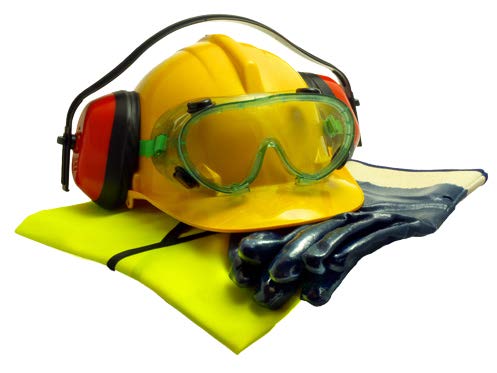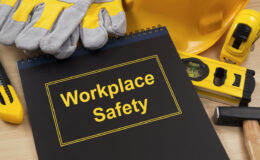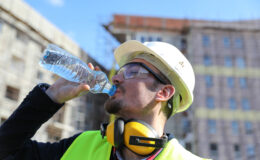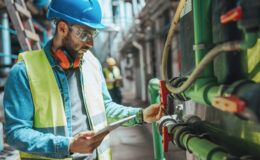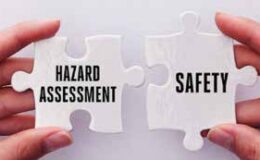By Chris Demeter, Senior Loss Control Consultant
Have you ever forgot to put on your safety glasses and hammered a few nails into a board? How about sanding that old dresser and not wearing a dust mask? Truth be told, I have before I realized the importance of using the proper PPE.
While PPE use can help prevent injuries and illnesses, engineering controls should be the primary method used to eliminate or minimize hazard exposure in the workplace. However, it may not be possible to eliminate all hazards through engineering design, guarding, or administrative controls. In these cases, the use of PPE is necessary.
If PPE is to be used, employers must implement a PPE program. The program should address the hazards present, the selection of the proper PPE, maintenance, proper use of PPE, the training of employees, and monitoring of the program to ensure its ongoing effectiveness.
To address the hazards present, the employer must perform personal protective hazard assessment and equipment selection. MIOSHA Part 33 Personal Protective Equipment defines hazard assessment and equipment selection as:
- An employer shall assess the workplace to determine if hazards are present, or are likely to be present, that require the use of personal protective equipment.
- If the hazards are present or are likely to be present then the employer shall do all of the following:
- Select, and have each affected employee use, the types of personal protective equipment that will protect the affected employee from the hazards identified in the hazard assessment.
- Communicate selection decisions to each affected employee.
- Select the personal protective equipment that properly fits each affected employee. • Select personal protective equipment that shall be designed and constructed to be safe for the work to be performed.
When selecting the proper PPE, you should ask yourself the following questions:
- Who is exposed and to what?
- How long are they exposed for?
- How much are they exposed to?
PPE must be properly maintained and stored when not in use, e.g. in a dry clean area. If it is reusable, it must be cleaned and kept in good condition. Proper maintenance could include:
- Keeping replacement safety glasses available.
- Using the right replacement parts that match the original, e.g. respirator filters.
- Having a supply of appropriate gloves.
- Who is responsible for maintenance and how it is to be done.
- Employees must make proper use of PPE and report its loss or destruction or any fault in it.
Employers must provide training and instructions on how to use PPE safely and efficiently. Training would consist of:
- When and what PPE is necessary.
- How to properly put on, take off, adjust and wear PPE.
- Proper care, maintenance, useful life and disposal of PPE.
The employer is responsible to provide at no cost to employees the personal protective equipment necessary to protect against hazards that the employer is aware of as a result of any required assessments. However, if the employee has lost or intentionally damaged the PPE issued to him or her, an employer is not required to pay for its replacement and may require the employee to pay for its replacement.
If you have dealt with MIOSHA Standards as long as I have, there are always exception to the rules. Stated above that the employer is responsible to provide at no cost to employees the personal protective equipment, here are a couple exceptions.
The employer is not required to pay for non-specialty safety-toe protective footwear, including steel-toe shoes or steel-toe boots, provided that the employer permits these items to be worn off the job-site.
The employer is not required to pay for prescription safety eyewear with removable or permanent sideshields if the employer provides safety eyewear that fits over an employee’s prescription lenses.
There are far too many types of PPE to cover in detail. Common types of PPE are: safety glasses, face shields, goggles, hard hats, safety shoes, coveralls, gloves, vests, earplugs, and respirators. Safety glasses are probably the most common type of PPE. Safety glasses provide minimum protection and are for general working conditions where dust, chips, or flying particles may present a hazard. Ensure the safety glasses are ANSI approved; look for ANSI Z87.1 stamped on the frames. Employees needing corrective lenses must either wear ANSI approved safety glasses with prescription lenses and frames or wear ANSI approved goggles designed to be worn over their regular prescription glasses.
Hazards in the workplace are a fact of life. No matter what you do, there is the need for personal protective equipment on many of the jobs you perform. Health hazards, eye hazards, noise and chemicals. Whether or not you use personal protective equipment is really up to you. If you choose not to, your attitude may be the biggest hazard of all. Personal Protective equipment is one of the best ways to protect your own health and safety.
PPE can be a lifesaver. Use it properly, look after it, and it should look after you.

